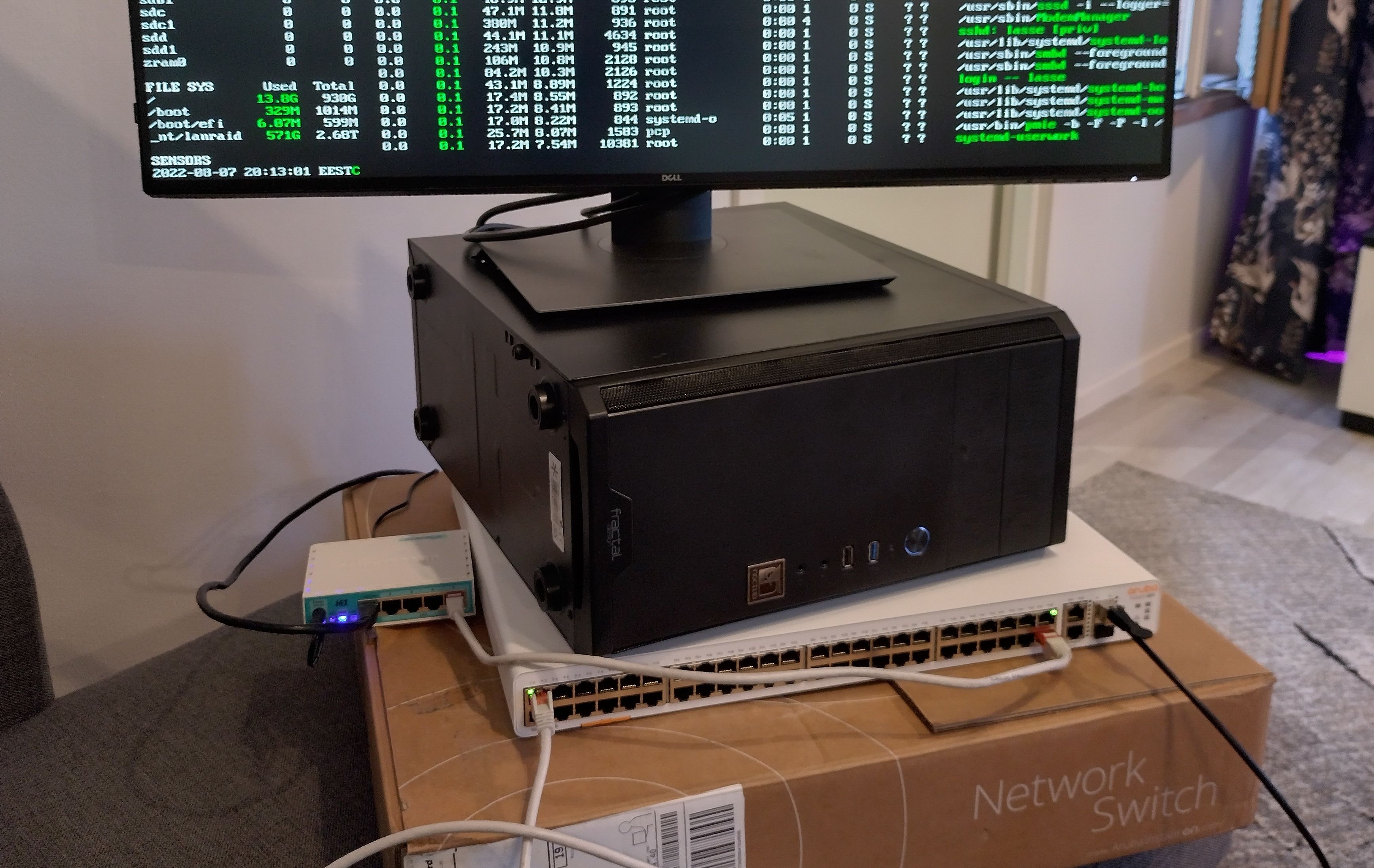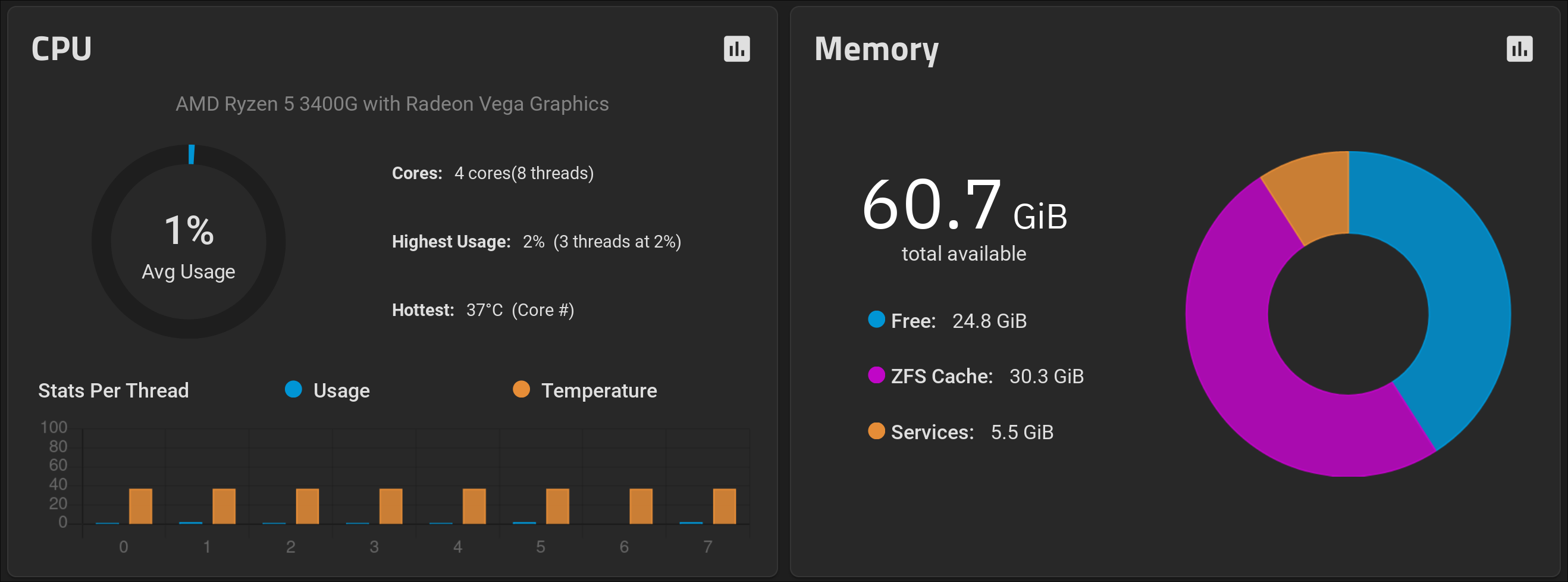It's been a while since I wrote about upgrades to the LAN-party network. Things have changed! I also feel like this could get out of hand quickly if I don't be aware of the possibility. ;)
New router and switch
Let's start from the router. I got a MikroTik hEX router which seem to be handling the job very nicely. I don't need much throughput from the box for the LAN anyway since nothing else than the internet traffic is going through it. They advertise 1,972.2 Mbps throughput which is more than enough for out slow internet, and even for smaller networks with not much traffic in general. The hEX also has a lot of features including VLANs which is a cool little thing I want to play around in the future.
I have also changed the switch to HP Aruba InstantOn 1960 48G which has 48 1Gbit ports as well as four 10G ports, two RJ45 and two SFP+ ports. This thing has a lot of other features too like L7 routing but we're just using it for a regular switch. It has excellent throughtput that suits our LAN party needs perfectly supporting everyone with a full 1Gbit speed through the 10Gbit NIC to our internal server. Also the packets per second is great for us for playing fast-paced shooters; the network won't be the bottleneck now.
Server upgrades
The LAN server is now running TrueNAS Scale which supports runnging VMs and containers. We can host our game servers on it while it also works perfectly as our steam downloads cache using the excellent LanCache.NET as a proxy and DNS. We just set the hEX to supply the cache server's IP as the DNS in the DHCP options and ever PC in the network will use it automatically.
There is also another DNS running to allow us to define some internal host names. The Pi-hole supports defining our own host names. The Pi-hole is the actual DNS the DHCP points at since it is running in the port 53 providing the default DNS services, and Pi-hole is then configured to use the lancache DNS as it's upstream DNS to get support for the automatic caching.
I also added a 10Gbit SFP+ NIC which I snatched from ebay to the server. That allows the server to support about ten people at the full 1Gbit speed as long as the SSDs can keep up with it. And they can do that easily since they are in RaidZ2. In general if people are downloading from the server they usually are downloading the same thing so it does not have to be loaded to the memory very often, even if the SSD speeds did not keep up.
Also the SSDs were not exactly perfectly inside the chassis. I have added an Icy Dock to mount the SSDs in more securely and it had some cooling as a bonus too. No need to worry about the cables getting stressed from the swinging during transit now.
These improvements combined: Nice!
 The network stack
The network stack
 SSD Trays
SSD Trays
 Truenas
Truenas
Next steps
The next step is to increase our internet bandwidth. We have been very limited with the internet speed at our regular location. We could remedy that with using two mobile connections from different carriers to get a bit more speed. But that needs some testing. Maybe we get it to work at our next party?